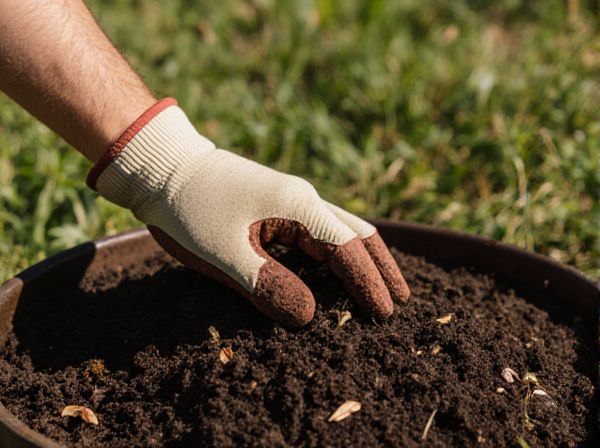
Windrow Composting vs Sheet Composting Illustration
Windrow composting involves forming organic waste into long, narrow piles that are regularly turned to enhance aeration and speed up decomposition. Sheet composting spreads organic materials in thin layers directly over soil, enriching it gradually while requiring minimal labor. Comparing these methods, windrow composting is more efficient for large-scale operations, whereas sheet composting is ideal for small gardens and maintenance with low equipment needs.
Table of Comparison
| Aspect | Windrow Composting | Sheet Composting |
|---|---|---|
| Process | Organic waste piled into long rows (windrows), regularly turned for aeration | Organic material spread in thin layers directly on soil surface, left to decompose naturally |
| Timeframe | 4 to 8 weeks for mature compost | Several months to over a year |
| Labor Intensity | Moderate to high; requires mechanical turning | Low; no turning required |
| Volume Capacity | Suitable for large-scale composting | Best for small-scale or garden use |
| Moisture Management | Requires regular monitoring and watering | Relies on natural moisture from environment |
| Odor Control | Good aeration reduces odor | Minimal odor due to slow decomposition |
| Equipment Needed | Turner or manual tools | None |
| Environmental Impact | Efficient organic waste recycling; potential emissions if poorly managed | Enhances soil health; low emissions |
Introduction to Windrow and Sheet Composting
Windrow composting involves placing organic waste in long, narrow piles that are regularly turned to promote aeration and accelerate decomposition. Sheet composting spreads organic materials like leaves and kitchen scraps directly over soil in thin layers, allowing gradual breakdown and nutrient absorption. Both methods enhance soil fertility but differ in scale, management intensity, and decomposition speed.
How Windrow Composting Works
Windrow composting involves arranging organic waste into long, narrow piles called windrows that are regularly turned to maintain aerobic conditions and optimal temperature for microbial activity. This method promotes efficient decomposition by ensuring adequate oxygen flow and moisture levels throughout the pile, supporting rapid breakdown of materials. Windrows can reach temperatures of 130-160degF (54-71degC), which accelerates compost maturation and effectively reduces pathogens and weed seeds.
The Process of Sheet Composting
Sheet composting involves spreading organic materials such as kitchen scraps, yard waste, and manure in thin layers directly on the soil surface, allowing natural decomposition to enrich the soil. This method promotes gradual nutrient absorption, soil structure improvement, and moisture retention as microorganisms break down the layered organic matter in situ. Typically used in gardens and agricultural fields, sheet composting enhances soil fertility without the need for turning or aerating like in windrow composting.
Materials Suitable for Windrow vs Sheet Composting
Windrow composting is ideal for bulky, high-carbon materials such as straw, wood chips, and large quantities of yard waste, which require aeration and turning to decompose efficiently. Sheet composting suits fine, nitrogen-rich materials like grass clippings, kitchen scraps, and green manure, spread thinly over the soil to enhance organic matter directly in garden beds. Optimizing material choice between windrow and sheet composting accelerates decomposition and improves nutrient cycling in soil ecosystems.
Timeframe for Compost Maturation
Windrow composting typically requires 2 to 3 months for compost maturation due to the active aeration and regular turning that accelerates microbial activity. Sheet composting, relying on natural decomposition processes without frequent disturbance, often takes 6 to 12 months to fully mature. Temperature regulation and oxygen availability in windrow systems significantly speed up the breakdown of organic material compared to the slower, passive approach of sheet composting.
Space and Equipment Requirements
Windrow composting requires substantial open space and specialized equipment such as turners to aerate large piles efficiently, making it ideal for commercial-scale operations. In contrast, sheet composting demands minimal space and virtually no specialized tools, as organic materials are spread out in thin layers directly on the soil surface. The limited space and equipment needs of sheet composting suit small-scale or urban gardening environments where resources are constrained.
Managing Moisture and Aeration
Windrow composting involves regularly turning large, elongated piles to ensure optimal aeration and moisture distribution, promoting faster microbial activity and decomposition. Sheet composting relies on layering organic materials directly on the soil surface, requiring careful watering and occasional mixing to maintain adequate moisture and aeration for effective breakdown. Proper management of oxygen flow and moisture levels in both methods is crucial to prevent anaerobic conditions and achieve high-quality compost.
Benefits of Windrow Composting
Windrow composting offers significant benefits, including accelerated decomposition due to enhanced aeration and regular turning of organic materials. This method supports large-scale waste management by efficiently processing bulky volumes of yard waste, food scraps, and manure. Improved temperature control during the composting process reduces pathogens and weed seeds, resulting in high-quality, nutrient-rich compost.
Advantages of Sheet Composting
Sheet composting enhances soil moisture retention and reduces erosion by forming a protective organic mulch layer directly on the soil surface. It improves soil fertility gradually while suppressing weed growth and promoting beneficial microbial activity. This method requires less labor and space compared to windrow composting, making it ideal for small-scale or urban gardening.
Choosing the Right Composting Method for Your Garden
Windrow composting accelerates decomposition by piling organic waste into long rows, which requires space and regular turning to maintain aeration, making it ideal for larger gardens or farms. Sheet composting involves layering organic materials directly onto garden beds, enhancing soil nutrition with minimal labor and space, suitable for small gardens or urban settings. Selecting between windrow and sheet composting depends on garden size, available space, and time commitment for maintenance.
Windrow Composting vs Sheet Composting Infographic

 gardendif.com
gardendif.com